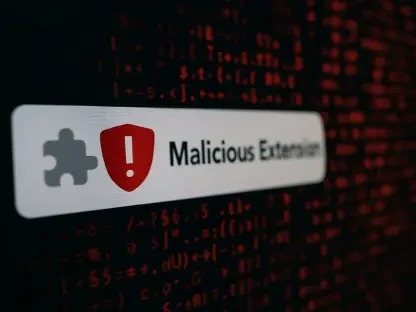How Can Teams Integrate DevSecOps for Improved Security and Development?
In the fast-paced realm of contemporary software development, integrating robust security measures throughout the development lifecycle has become increasingly imperative. The fusion of development (DevOps) and security (SecOps) efforts is essential for creating a cohesive, resilient, and secure development process. To foster this integration, organizations must undertake strategic initiatives that include removing organizational silos, establishing trust between teams, and collaboratively managing risks.
Eliminating Silos from the Top Down
Bridging Organizational Leadership
One of the first steps in integrating DevSecOps is eradicating organizational silos, particularly those between the chief information security officer (CISO) and the chief technology officer (CTO). Leadership within an organization must embrace a shared vision where security becomes a core component of strategic objectives, rather than an afterthought. The collaboration between the CISO and CTO is indispensable as their joint efforts bridge the gap between security mandates and technological advancements. This partnership can be further operationalized through regular joint training sessions, fostering mutual understanding and the exchange of knowledge.Investments in tools that integrate security seamlessly within the DevOps pipeline, such as integrated development environments (IDEs) with built-in security plug-ins, automated security testing tools, and continuous integration/continuous deployment (CI/CD) platforms, are crucial. Utilizing such tools not only reduces friction between disparate systems but also ensures that security considerations are embedded within the development process. These efforts advocate for a proactive approach to security, where potential threats and vulnerabilities are addressed early on rather than during later stages of development or after deployment. By incorporating security into the very fabric of the development lifecycle, organizations can build a more resilient development process that preempts security issues before they escalate.
Effective Integration Tools
Utilizing integrated development environments (IDEs) with built-in security plug-ins, automated security testing tools, and continuous integration/continuous deployment (CI/CD) platforms can significantly reduce the friction between disparate systems. This allows teams to incorporate security measures seamlessly into their existing workflows, transforming security into a proactive measure rather than a reactive one. The implementation of such tools converts security from being perceived as an external imposition to becoming an integral aspect of the development process.Furthermore, these tools facilitate real-time feedback, so developers can address security issues as they arise, rather than after the fact. Continuous security testing and monitoring can help identify vulnerabilities early and track their resolution. This seamless integration also allows for more efficient audits and compliance checks, ensuring that the organization’s security posture remains strong throughout the development lifecycle. By investing in such comprehensive tools and fostering collaboration at the leadership level, organizations can break down silos and pave the way for a more secure and efficient development process.
Establishing Trust Between Teams
Overcoming Historical Barriers
Historically, security teams are often viewed as obstacles to innovation, perceived as imposing restrictions that hinder the creative and agile nature of DevOps teams. On the other end, DevOps teams are sometimes seen as disregarding security protocols in favor of speed and innovation. Overcoming these perceptions requires deliberate strategies to foster interpersonal relationships and professional respect between the two teams. Regular meetings, joint workshops, and cross-functional training sessions can facilitate better understanding and collaboration.These initiatives help both teams comprehend each other’s constraints and priorities, fostering a culture of mutual respect. As both sides start to see the value in each other’s work, the collaborative atmosphere improves dramatically. Security professionals gain insights into the developmental constraints and timelines, whereas developers become more aware of the security implications of their work. This mutual understanding is pivotal in fostering an environment where security is inherently valued, rather than seen as a hurdle.
Promoting Open Communication
Facilitating open communication channels is key to building trust between security and DevOps teams. Consistent and collaborative engagements allow both teams to understand each other’s challenges and priorities, thereby reducing misunderstandings and fostering a culture of cooperation. By developing open lines of communication, organizations can create a more inclusive environment where security becomes a shared responsibility rather than an external imposition.This philosophy is crucial for enhancing the overall efficiency and effectiveness of the development process. Open communication ensures that security concerns are addressed promptly and appropriately, mitigating risks early. Team members are encouraged to voice concerns and suggestions, fostering a more inclusive and innovative atmosphere. By promoting a culture of transparency and collaboration, organizations not only bridge the trust gap but also improve the overall security posture of the development process, aligning it more closely with business objectives.
Balancing Risk Management Together
Collaborative Risk Assessment
Balancing risk management between DevOps and security teams is central to successful DevSecOps adoption. Historically, there has been a misconception that risk can be entirely eradicated; however, this is impractical. Instead, organizations should focus on effective risk management by identifying, assessing, and prioritizing risks based on their potential business impact. This collaborative approach enables both teams to understand the broader business implications of security vulnerabilities, thereby aligning their efforts more closely with organizational objectives.Regular assessments and communication between teams ensure that vulnerabilities are identified early and addressed appropriately. This proactive stance on risk management not only strengthens the security posture of the organization but also fosters a sense of collective responsibility. By working together to manage risks, organizations can develop more secure and resilient software products.
Informed Decision-Making
Regular discussions about the risk landscape enable teams to make informed decisions about addressing vulnerabilities. By collaborating closely, both DevOps and security teams can ensure that risks are managed effectively and that security practices align with broader business objectives. This allows for a more robust security posture, which is vital in today’s ever-evolving threat landscape.Such collaboration ensures that decisions are not made in isolation, but rather based on a comprehensive understanding of the potential business impact. This approach allows for prioritizing security measures that have the most significant effect on reducing risk, thus utilizing resources more efficiently. By adopting collaborative risk management practices, organizations can ensure that security is an integral part of their development process, supporting the creation of robust, secure products.
Adopting Proactive Security Culture
Shifting Left in Development
The paradigm of ‘shifting left’ in the development lifecycle emphasizes incorporating security measures from the earliest stages of development. This approach highlights the growing recognition that security must be a fundamental component of the development process, rather than an after-the-fact consideration. Shifting left ensures that security is integrated into every phase, from design to deployment, making it easier to identify and mitigate potential vulnerabilities early on.This proactive strategy not only strengthens the overall security posture but also streamlines the development process by reducing the number of last-minute security fixes. It fosters a culture where security is everyone’s responsibility, promoting greater awareness and adherence to security best practices. By embedding security considerations into the initial stages of the development lifecycle, organizations can ensure that their products are resilient against evolving threats.
Leadership-Driven Security Initiatives
Top leadership must drive the pursuit of a proactive security culture. By embedding security into the organizational fabric, leadership ensures that security is considered at every development stage. This top-down approach is essential for fostering a more secure coding practice environment and aligning security objectives with business goals.Leadership-driven initiatives can include setting clear security policies, providing ongoing training and resources, and fostering an open dialogue about security challenges and successes. By prioritizing security at the highest levels, organizations can create a culture where security is valued and practiced consistently across all teams. This comprehensive approach will not only improve the organization’s overall security posture but also enhance the trust and collaboration between DevOps and security teams.
Leveraging Integrated Tools and Platforms
Investment in Technology
Investing in integrated tools and platforms that support both security and development processes is crucial for minimizing friction. Tools that offer seamless integration streamline collaborative efforts, allowing for more efficient communication and coordination between DevOps and security teams. These technologies enable real-time monitoring and analysis, helping to identify and address vulnerabilities as they arise.By leveraging such advanced tools, organizations can not only improve their security posture but also enhance overall productivity. Integrated platforms facilitate continuous testing and feedback, ensuring that security is maintained throughout the development lifecycle. These investments are essential for creating a more secure and resilient development environment.
Enhancing Collaborative Efforts
Platforms that bridge the gap between security and development streamline processes and enhance collaborative efforts. This seamless integration reduces friction points, facilitating a smoother incorporation of security measures into the development pipeline. By focusing on these technologies, organizations can promote a more cohesive and collaborative approach to development and security.These platforms also support more efficient audits and compliance checks, ensuring that the organization remains aligned with industry standards and regulatory requirements. By fostering a culture of collaboration and continuous improvement, organizations can develop more secure and resilient software products. This approach not only strengthens the overall security posture but also aligns security practices with business objectives.
Continuous Improvement and Adaptation
Regular Feedback Loops
To ensure ongoing success, organizations must establish regular feedback loops where both DevOps and security teams can refine processes and address any emerging challenges. Continuous improvement is a hallmark of DevSecOps, requiring organizations to adapt and evolve their practices consistently. These feedback loops allow teams to learn from past experiences, identify areas for improvement, and implement changes that enhance security and efficiency.By fostering a culture of continuous learning and adaptation, organizations can stay ahead of emerging threats and ensure that their security practices remain effective. Regular feedback also promotes a sense of empowerment among team members, encouraging them to take an active role in improving security measures and processes.
Staying Updated with Trends
In the dynamic world of modern software development, infusing strong security measures throughout the development lifecycle is increasingly critical. Marrying development (DevOps) and security (SecOps) efforts is crucial to create a unified, robust, and secure development process. This integration ensures not just the functionality of the software but also its resilience against threats that can undermine its integrity. To achieve this, organizations need to launch strategic initiatives that dismantle organizational silos, thereby encouraging a collaborative culture. Establishing trust between development and security teams is pivotal to this integration. Trust fosters open communication channels and a willingness to share knowledge, which significantly increases the ability to preemptively tackle security issues. Additionally, collaboratively managing risks empowers both teams to foresee potential vulnerabilities early in the process, ensuring they are addressed before they become critical issues. This holistic approach combines the agility of DevOps with the vigilance of SecOps, thereby laying the foundation for a development environment that prioritizes both innovation and security.








